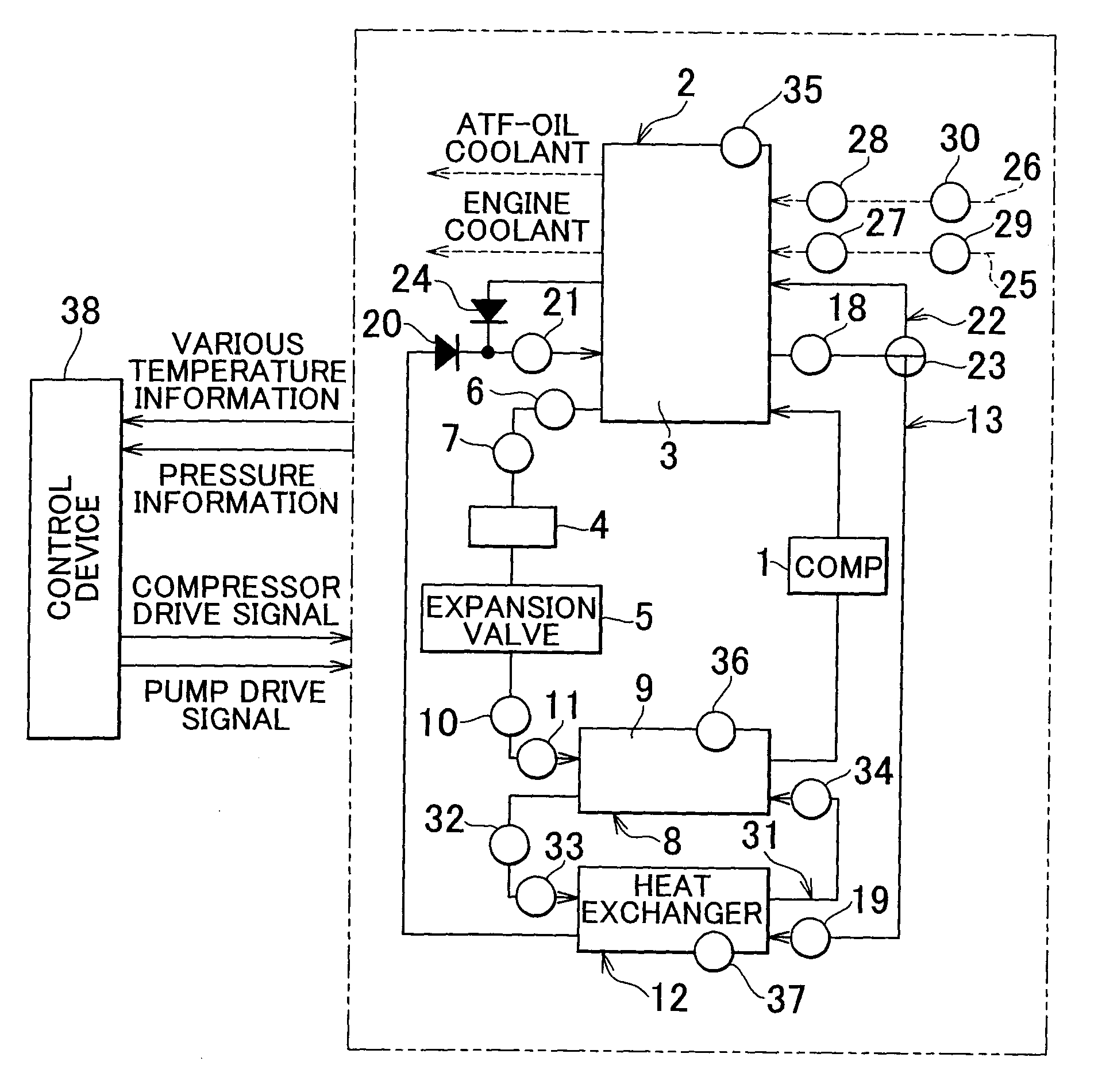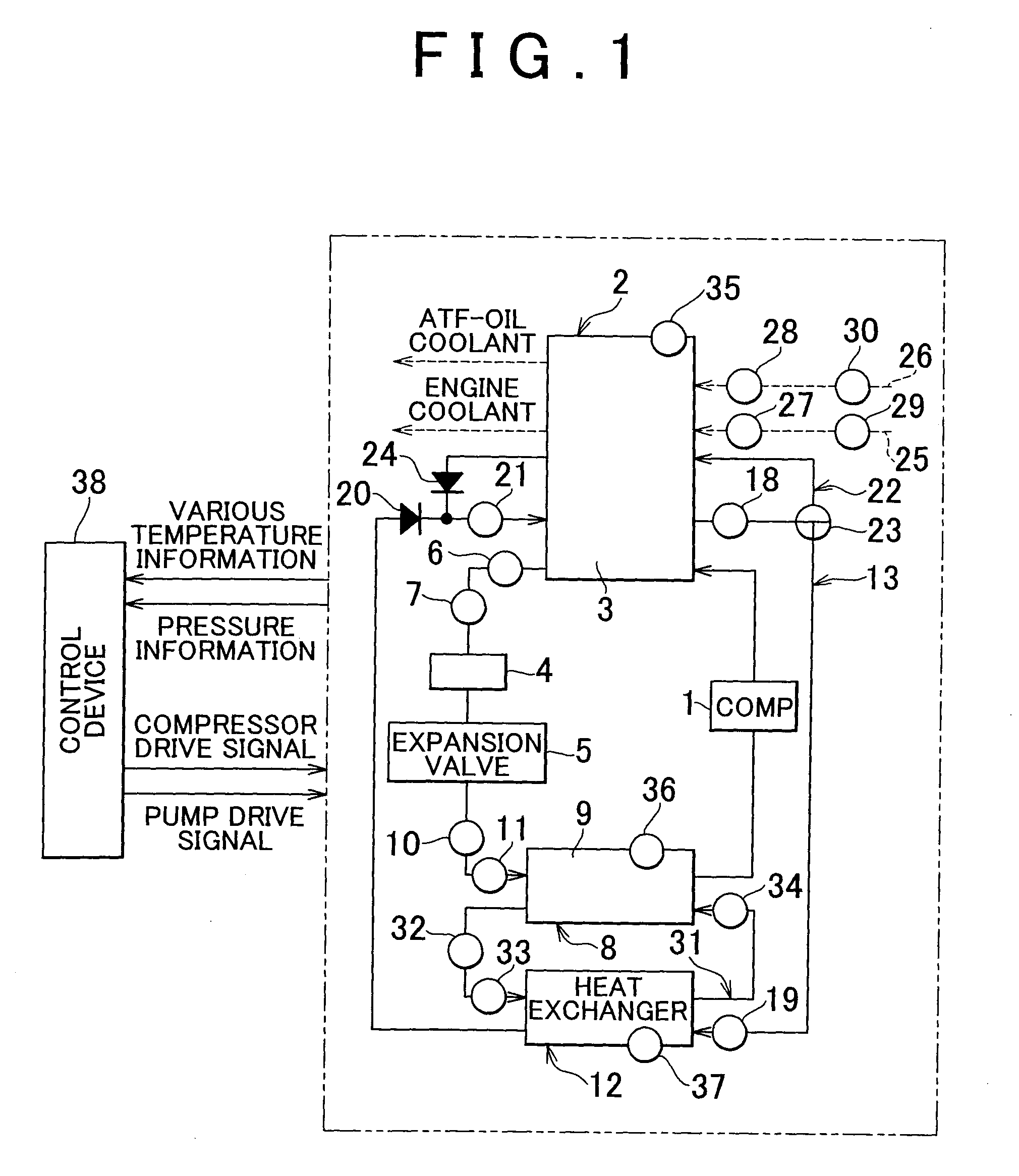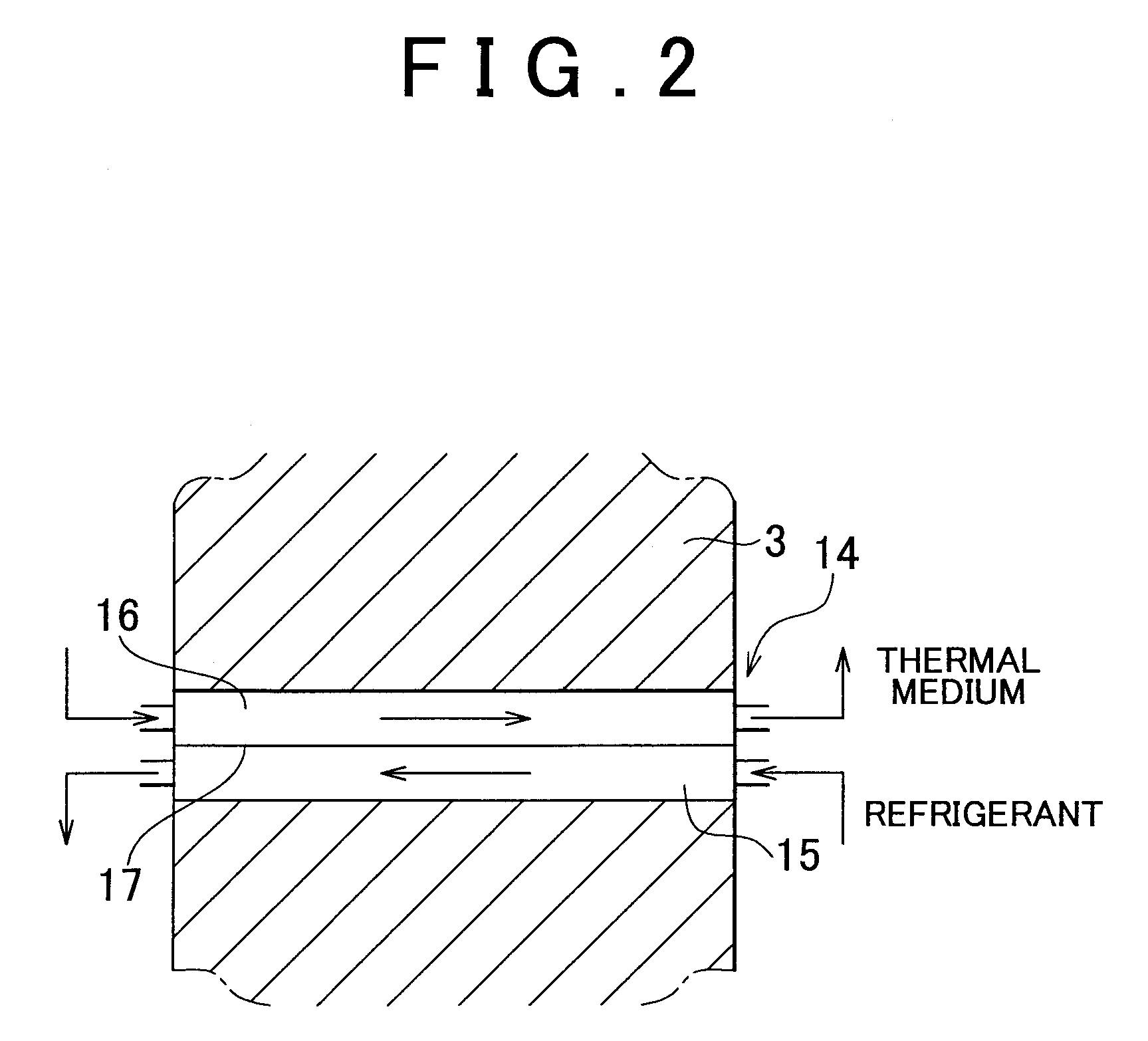Heat storage device
a technology of storage device and heat storage device, which is applied in the direction of indirect heat exchanger, domestic cooling apparatus, lighting and heating apparatus, etc., can solve the problems of increased fuel consumption of vehicles, excessive compression of compressors, and large loss of energy, so as to enhance the thermal efficiency of the refrigeration cycle, enhance the thermal efficiency, and reliably liquefy the refrigerant
- Summary
- Abstract
- Description
- Claims
- Application Information
AI Technical Summary
Benefits of technology
Problems solved by technology
Method used
Image
Examples
Embodiment Construction
[0037]Next, this invention will be explained in concrete terms. The example shown in FIG. 1 is an example in which this invention has been applied to a condenser and an evaporator for a heat pump that operates on a refrigeration cycle, and, first to explain this refrigeration cycle: a compressor 1, which is driven by a power source such as an engine or an electric motor (neither of these is shown in the figures) or the like, compresses refrigerant, and is connected a heat storage device, such as the condensation device 2 (a condenser), on its discharge side. This heat storage type condensation device 2 liquefies the refrigerant by extracting, with a heat storage material 3, the heat from the refrigerant after its temperature has been elevated by pressurization and compression. The heat storage material 3 corresponds to the “first heat storage material” of the Claims. A sensible heat storage material or a latent heat storage material may be employed as the heat storage material 3, bu...
PUM
 Login to View More
Login to View More Abstract
Description
Claims
Application Information
 Login to View More
Login to View More - R&D
- Intellectual Property
- Life Sciences
- Materials
- Tech Scout
- Unparalleled Data Quality
- Higher Quality Content
- 60% Fewer Hallucinations
Browse by: Latest US Patents, China's latest patents, Technical Efficacy Thesaurus, Application Domain, Technology Topic, Popular Technical Reports.
© 2025 PatSnap. All rights reserved.Legal|Privacy policy|Modern Slavery Act Transparency Statement|Sitemap|About US| Contact US: help@patsnap.com



